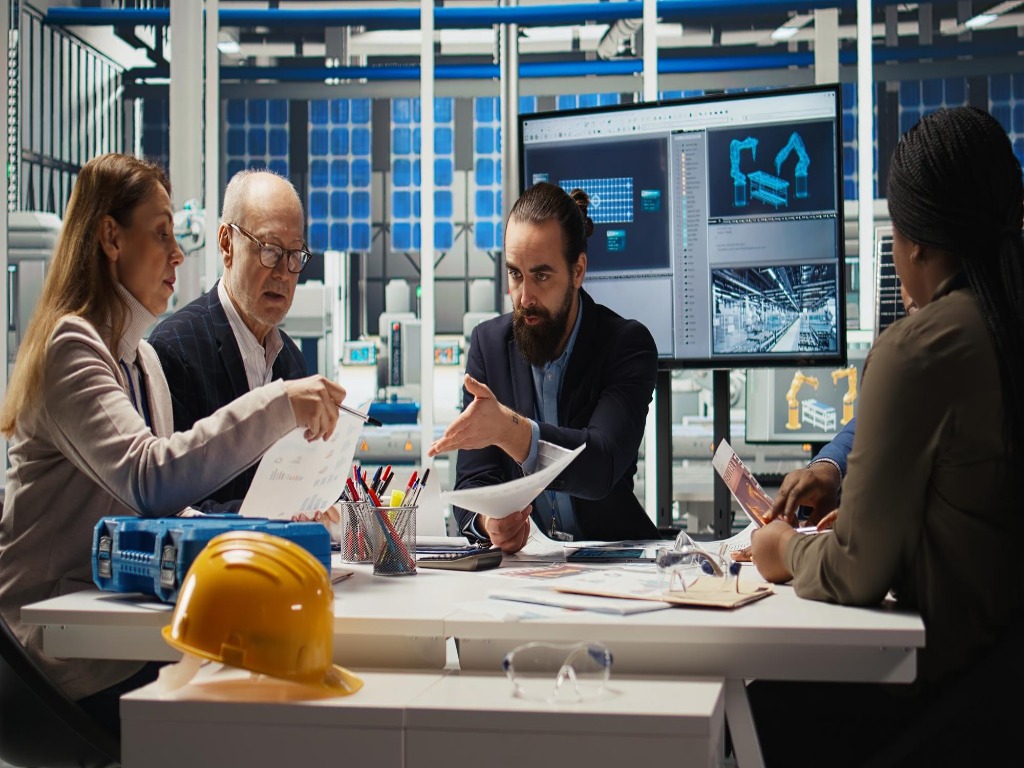 Important Documents For Admission (2025 - 2026)
Important Documents For Admission (2025 - 2026)

The engineering landscape is evolving at a rapid pace, driven by advancements in technology, globalization, and the increasing demand for innovation. For engineering students, theoretical knowledge alone is no longer enough to stand out in the competitive job market. Practical exposure, hands-on experimentation, and access to modern infrastructure are now equally critical to ensure career readiness.
At Indore institute of Science and Technology, the Top Engineering Colleges in Indore where they have recognized this shift and are investing heavily in cutting-edge facilities that bridge the gap between academic theory and real-world application. From advanced laboratories and high-tech classrooms to innovation hubs and industry-collaborated research centers, these facilities are redefining the way engineering is taught and learned.
This article explores how state-of-the-art infrastructure and modern learning environments are transforming engineering education and shaping future-ready professionals.
At IIST, cutting-edge facilities are more than just infrastructure—they are catalysts for transforming how engineering is learned and applied. Our smart classrooms foster interactive discussions, while advanced laboratories for each department, including AI & ML, robotics, and mechanical design, enable practical, hands-on experience. The campus boasts high-speed Wi-Fi, a fully automated central library with thousands of volumes and journals, dedicated language labs, and ICT-enabled learning spaces to promote collaboration and research. Students also benefit from innovation-driven hubs that encourage real-time prototyping and experimentation. These resources are complemented by over 26 active student clubs that bridge theory with practice through robotics challenges, aero-modelling events, coding marathons, and green initiatives.
Traditional classrooms focused heavily on textbook learning, lectures, and exams. While this laid a solid foundation, it often left graduates underprepared for industry challenges. Today, engineering education emphasizes:
Cutting-edge facilities play a pivotal role in making this modern approach possible, enabling students to work on real-world problems with real-time resources.
One of the most significant ways facilities enhance learning is through advanced laboratories that replicate industry environments. Equipped with modern instruments, simulation software, and testing setups, these labs provide:
Practical learning not only reinforces classroom concepts but also builds technical confidence among students.
Modern engineering learning spaces have evolved beyond blackboards and chalk. The Best Engineering Institutions in Indore now feature:
These upgrades make learning more engaging, personalized, and accessible, accommodating different learning styles.
Engineering is inherently linked to creativity and problem-solving. Innovation labs and incubation centers foster entrepreneurial thinking by providing:
Such centers help students move from being job seekers to job creators, aligning with the global push toward innovation-driven economies.
Cutting-edge facilities are incomplete without a strong emphasis on research. Many institutions now have specialized R&D hubs focusing on:
These hubs encourage students to work alongside faculty and industry experts, producing research with tangible impact.
State-of-the-art facilities often emerge from partnerships with leading companies. This collaboration brings:
The result is a workforce that is immediately productive upon graduation.
Modern engineering requires the ability to predict and optimize designs before implementation. Facilities now include:
Such tools save costs, reduce development time, and improve problem-solving accuracy.
As industries move towards automation, exposure to robotics has become a core requirement. The Best Engineering Institutions in Indore provide:
Students trained in robotics gain a competitive edge in manufacturing, healthcare, logistics, and other sectors.
The future of engineering lies in smart systems that communicate and learn autonomously. Modern facilities now include:
These resources enable students to work on cutting-edge projects like smart homes, industrial automation, and autonomous vehicles.
Sustainability is now an integral part of engineering education. Institutions are integrating:
These facilities prepare students to contribute meaningfully to eco-friendly engineering solutions.
Some top engineering colleges have tie-ups with foreign universities, enabling:
Such opportunities enhance cultural competence and expand career possibilities.
Creativity thrives when students have the freedom to experiment. Makerspaces allow students to:
This culture of experimentation often sparks breakthrough innovations.
Engineering work often involves potential hazards. Modern facilities prioritize:
Safety-first learning ensures students can work responsibly in high-stakes environments.
Beyond physical infrastructure, the digital revolution has transformed resource access. Today’s engineering students benefit from:
Knowledge accessibility empowers self-driven learning and research.
Access to cutting-edge facilities enhances:
Graduates from such institutions are not only knowledgeable but also adaptable and solution-oriented.
The transformation of engineering education through modern facilities marks a significant leap towards producing industry-ready professionals. At Indore institute of Science and Technology, the Best Engineering College in Indore where these institutions are leading this change, ensuring students gain a blend of theoretical knowledge, practical skills, and innovative thinking.
As technology continues to evolve, institutions that invest in advanced learning environments will remain at the forefront of shaping the next generation of engineers — professionals who are not just participants in the industry but leaders of innovation.
FAQs:
Q.1 How do modern labs change the way engineering is taught?
Ans. They turn theory into practice, allowing students to build, test, and innovate in real-world-like environments.
Q. 2 What’s the role of smart classrooms in engineering learning?
Ans. Smart classrooms make lectures interactive with multimedia tools, simulations, and live problem-solving.
Q. 3 Do incubation centers really help students become entrepreneurs?
Ans. Yes! They provide mentorship, funding, and infrastructure to turn ideas into successful startups.
Q. 4 How do industry-sponsored labs benefit students?
Ans. They give access to the latest tools and technologies, ensuring students are industry-ready upon graduation.
Q. 5 Can cutting-edge facilities improve placement chances?
Ans. Definitely — hands-on training with modern tools makes students highly attractive to recruiters.
Q. 6 What’s the link between research hubs and student success?
Ans. Research hubs offer opportunities to work on impactful projects, boosting skills, portfolios, and career prospects.